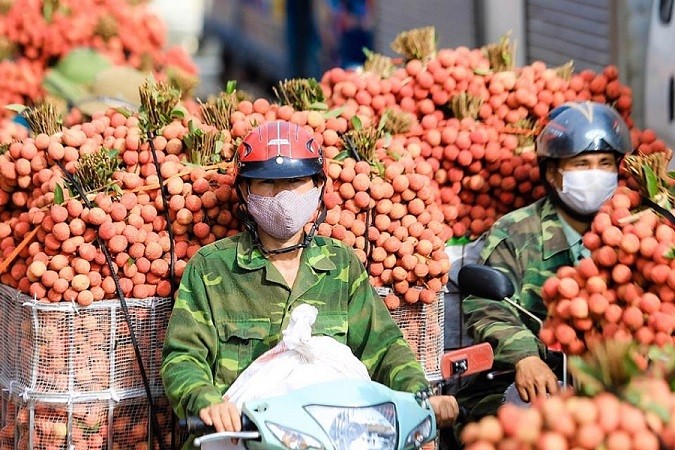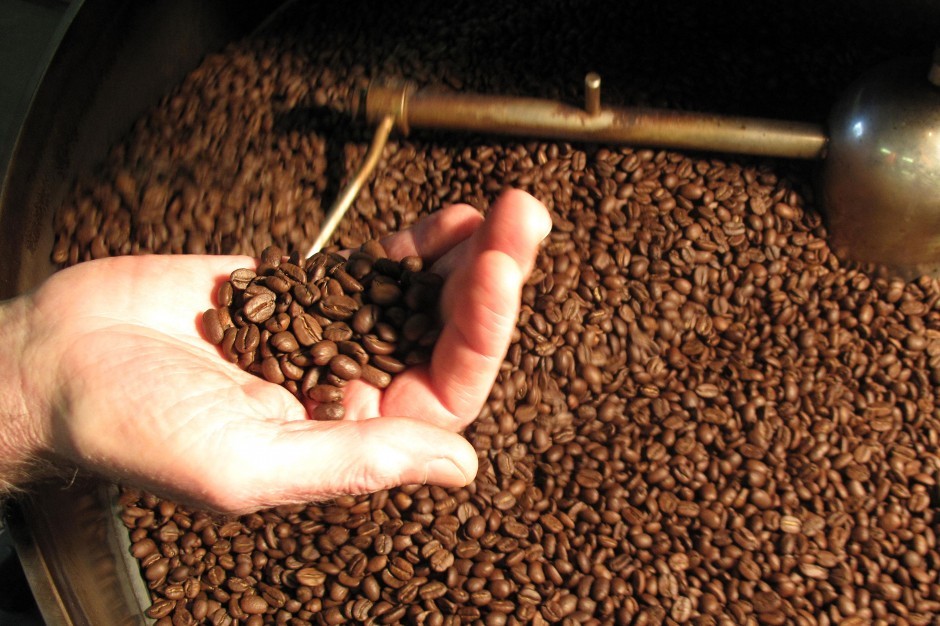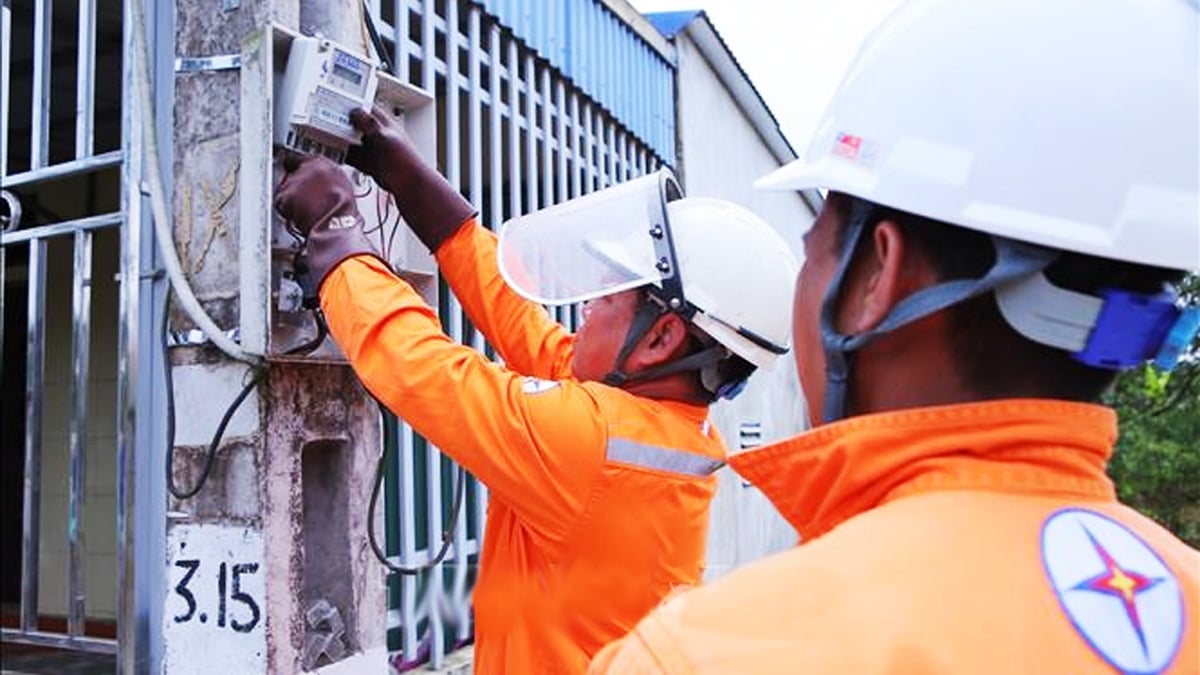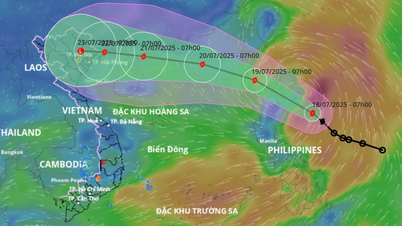 |
| Vietnamese lychees have yet to penetrate the Taiwanese (Chinese) market. (Source: Industry and Trade Newspaper) |
Why can't fresh Vietnamese lychees and longans enter Taiwan?
Lychee was planted in Taiwan (China) quite early and up to now, the area of lychee cultivation here is relatively stable. As for longan, this is a subtropical fruit, widely distributed in Taiwan due to its suitable climate.
Regarding harvest time, lychee in Taiwan is also harvested from May to September, in which the main harvest usually starts in mid-August and ends in mid-September.
Statistics from Taiwan show that lychees grown here are mainly consumed in the domestic market, accounting for 99%.
Meanwhile, about 1/3 of Taiwan's longan output is consumed fresh with the main market being the domestic market, the other 1/2 of the output is harvested and processed to make dried longan medicine, the rest will not be harvested due to high labor costs and the impact on honey farming.
Regarding imports of fresh lychee and fresh longan (HS code 0810.90.10.10.7), according to statistics from the International Trade Bureau, in the period 2021-2022, Taiwan did not record any imports of fresh lychee and fresh longan from the world .
Taiwan has always had a tendency to protect agricultural products, especially those grown here. Therefore, Taiwan has not yet opened its market for fresh longan and lychee due to disease.
In April 2015, the Department of Crop Production ( Ministry of Agriculture and Rural Development ) sent a document with a technical report to the Bureau of Animal and Plant Health Inspection and Quarantine (BAPHIQ) of the Taiwan Agricultural Commission, proposing to open the market for five types of fresh Vietnamese fruits including mango, lychee, longan, grapefruit and rambutan.
However, up to now, Taiwan has not yet completed the disease risk assessment process for rambutan based on the priority order that Vietnam has stated, so it has not considered other fruits, including lychee and longan.
On that basis, fresh lychee and fresh longan from Vietnam cannot be exported to Taiwan in the next one or two years due to quarantine barriers.
Mr. Vu Van Cuong - Head of the Trade Department of the Vietnam Economic and Cultural Office in Taipei - recommended that relevant agencies such as the Ministry of Agriculture and Rural Development, the Ministry of Industry and Trade, and the Vietnam Fruit and Vegetable Association need to continue to advocate and speed up the process of reviewing and opening the Taiwanese market for fresh lychees and longans from Vietnam.
At the same time, research measures to guide businesses to increase processed products to promote the export of processed products from lychee and longan to Taiwan (China).
In the first 4 months of 2023, durian exports increased nearly 6 times
In the first four months of the year, durian export turnover reached more than 190 million USD, an increase of nearly 6 times compared to the same period last year, of which the Chinese market accounted for over 84%.
A report from the Ministry of Agriculture and Rural Development shows that in 5 months, fruit and vegetable exports reached 1.97 billion USD, an increase of 39% over the same period in 2022. This is the second highest growth rate after the rice industry.
In the structure of main export fruit categories, data from the Import-Export Department (Ministry of Industry and Trade) recorded that only dragon fruit and bananas had negative growth in the first 4 months of the year. In contrast, other main export fruits all had double-digit growth rates. In particular, the export value of durian reached more than 190 million USD, a sharp increase of 573% compared to the same period last year.
Durian is mainly exported to the Chinese market, accounting for 84.3% of the total export value of this fruit.
At the end of May, the harvest season of Vietnamese durian exports was also one of the reasons for the sharp increase in the number of vehicles carrying goods to the Huu Nghi international border gate, causing a traffic jam of more than 700 trucks. On the evening of May 31, Prime Minister Pham Minh Chinh requested 8 ministries, localities and relevant agencies to promptly find ways to handle and promote the clearance of agricultural products at the northern border gates.
Currently, Vietnam has 293 durian growing areas and 115 durian packaging facilities that have been granted official export codes to this market by China.
In addition to official durian, Vietnam and China have also signed protocols with fruits such as mangosteen and bananas and are negotiating to sign protocols on dragon fruit, watermelon, lychee, longan, rambutan, and mango.
Supply cannot meet demand, Vietnamese coffee earns more than 2 billion USD in 5 months
The Import-Export Department (Ministry of Industry and Trade) cited data from the General Department of Customs, saying that according to estimates, Vietnam's coffee exports in May 2023 reached 165 thousand tons, worth 396 million USD, up 0.9% in volume, but down 0.7% in value compared to April 2023, compared to May 2022, up 15.7% in volume and up 21.8% in value.
In the first 5 months of 2023, Vietnam's coffee exports are estimated at 882 thousand tons, worth 2.02 billion USD, down 2.2% in volume, but up 0.2% in value over the same period last year.
In May 2023, the average export price of Vietnamese coffee is estimated at 2,399 USD/ton, down 1.6% compared to April 2023, but up 5.3% compared to May 2022.
In the first 5 months of 2023, the average export price of coffee in our country is estimated at 2,295 USD/ton, an increase of 2.4% over the same period last year.
 |
| The EU market is the largest import market for Vietnamese coffee. (Source: Vietnamcoffee) |
According to Mr. Do Ha Nam, Vice President of the Vietnam Coffee and Cocoa Association (VICOFA), the increase in coffee prices is due to supply not meeting demand. It is forecasted that from now until the end of the year, coffee exports will still be favorable as demand increases while supply does not improve.
This year's coffee output is forecast to decrease by 10%-15%/year due to unfavorable weather. In addition, the recent inflation has caused the prices of raw materials and fuels to increase, especially the prices of agricultural materials have increased by 2-3 times, causing the cost of coffee production and processing to increase, leading to an increase in selling prices.
The European Union (EU) is the largest import market for Vietnamese coffee, accounting for 45% of total coffee exports. Therefore, the EU's adoption of regulations on preventing deforestation and forest degradation will certainly have a negative impact on Vietnam's coffee exports in the future.
Therefore, VICOFA recommends that the Ministry of Agriculture and Rural Development and relevant units need to step up the dissemination of regulations and warnings to people and businesses so that units can prepare, because time is running out as this regulation will be applied by the EU at the end of 2024.
Source






























































































![[Infographic] In 2025, 47 products will achieve national OCOP](https://vphoto.vietnam.vn/thumb/402x226/vietnam/resource/IMAGE/2025/7/16/5d672398b0744db3ab920e05db8e5b7d)





Comment (0)